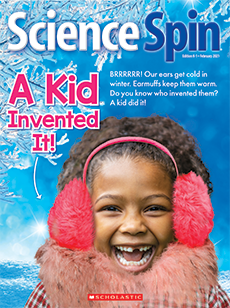Cool Sounds Lesson Plan
Academic Standards
Reading Objective:
Children will read about an ice band that plays instruments made from ice.
When parts of a musical instrument vibrate, they make a cool sound!
Next Generation Science Standards:
1-PS4-1 Vibrating materials can make sound.
Vocabulary:
vibrate
Use these questions to check students’ understanding and stimulate discussion:
1. What does vibrate mean? ( to move back and forth quickly)
2. What happens when the strings on a bass vibrate? (They make a sound.)
3. What happens when you blow air into a horn and it vibrates? (It makes a sound.)
4. What ice instrument would you like to play? (Answers will vary.)
Go online to print or project the Reading Checkpoint.
- An ice band plays every year at the Ice Music Festival in a country called Norway.
- To make the instruments, they cut blocks of ice from a frozen lake. Then they shape the ice.
- After the festival, some of the instruments melt.
Materials: empty tissue boxes, rubber bands of different widths, copies of the skill sheet Optional: paper, glue, markers, and/or stickers to cover and decorate the tissue boxes
Overview: Children will learn about sound and vibrations firsthand when they stretch rubber bands across the openings of tissue boxes, pluck their “guitars,” and observe.
Directions:
- Before the lesson, ask children to bring in empty tissue boxes. Several children can work on one “guitar.” Alternatively, children can do this at home.
- If you’re planning to have children decorate the tissue boxes, do that first. They can cover the boxes with paper or just add stickers!
- Give each child or group an assortment of rubber bands of different widths. Kids can stretch the rubber bands across the hole in the tissue box.
- Pluck a thin rubber band. What does that sound like?
- Pluck a thick one. Does that sound different?
- Pluck a rubber band and touch it. Do you feel the vibration?
